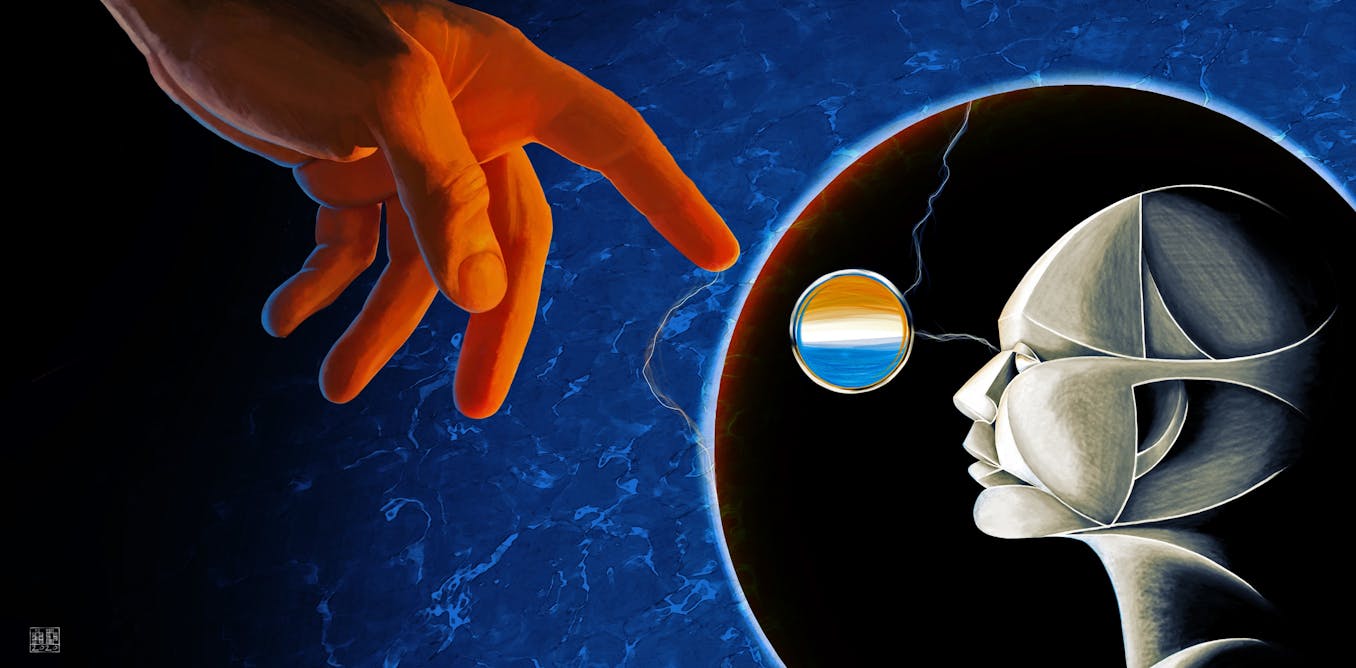Hey Steve, first of all let me say that at least for me the arguments and counter arguments sharpen and deepen the intellectual understanding of emptiness. Greatly appreciated!
As synchronicities go, just a few days ago I listened to B. Alan Wallace’s recording of the Autum 2014 retreat, specifically session Sept 26pm @24:40 min, in which he describes the classical discussion which we seem to be leading here: it’s essentially metaphysical realism vs. Yogachara view (as I learned). As I remember @Andrew lectured on these two view’s in interviews as well.
Regarding your last post:
Metaphyscial realism postulates that there is such thing as an object.
Yogachara postulates that “object” is an illusion.
Here are the paradoxi at which I still bang my head against:
When we ask ourselves: „ …does it (the „object““) exist at all outside of the framework of the observer?“ we are unconsciously postulating two questionable dogmas, we hold as universally true:
a) it (the object) is an entity, which means effectively that it is something independent from a subject and is „out there“, being physically separated from other „objects“
b) exist - in a dualistic world the concept of existence or its counterpart „non-existence“ does make sense from that dualistic reference point. But does the term also make sense outside of a dualistic view? And is the dualistic view of reality really the most accurate view or perhaps only a crude but evolutionary useful mode of perceiving, interacting and surviving?
Regarding:
a) Is it possible to have an „object“ outside of the framework of the observer?
- I would argue that this is not possible because:
An object is always defined by a system-boundary, which defines what belongs to the object and what does not and which is defined by the specific nature of the observer.
E.g. The dualistic human perception draws an arbitrary, primarily visual system-boundary around the sensory phenomenon called „mountain“ . For a human, the mountain ends perhaps at the visual boundary between the flat plain and the first perceivable slopes and the peak and the surrounding air.
A tiny insect would draw the boundary of “objects” totally differently than a human being, depending on its sensory aggregates due to its small size and limited perception.
Depending on the observer‘s limited sensory perception field relative to the dimensions of the perceivable phenomenon, observer-specific system-boundaries will be drawn.
If there would be universally true system-boundaries independent of the type of observers. which possible criterion could be used to draw exactly these system-boundaries?
If universally true, these system-boundaries would always need to be the same for the „object“, so the same for a human as for a flea as for an elementary particle, etc.
Thus, there can be no universally valid system-boundary defining an object independently of the framework of the observer.
Conversely, objects can thus only be defined dependently of the framework of the observer.
But if that is true, then different frameworks of observers will perceive different realities.
and are mental constructs specific to the mind of the specific type of observer.
So, if there is no absolute, universal valid viewpoint from which a specific object can be defined, how can there be an independently existent object at all?
So, does this logic mean that for example the moon would disappear if there would be no one that would perceive it - not even a single tiny creature?
From the view of metaphyiscal realism: “No, the object would not disappear.”
From the view of Yogachara (as I understand it): "The question does not make sense, since it postulates that objects exist independently. Would the question be: "Do the specific conditions instantaneously disappear for a specific observer to have a very similar experience, when he/she returns his/her perception? The answer would also be “No, they don’t disappear”.
Yogachara would argue that “technically” speaking the moon is not an object because an object is just a mental construct, a mental model which is useful in mentally representing/modeling sensory phenomena which are specific to the type of observer. There is no such thing as objects (in that sense!) out-there. (Side bar: “out-there” is in that view also a mental construct and does not exist in that sense).
Since our languages are structured in a dualistic manner, the noun „moon“ signifies an object and - due to our mode of mental operation - effectively veils that experience is truncated into subject and object. Perhaps one could call it an oversimplification of the dynamics of reality.
As I understand it, Yogachara would argue that the view that there are “objects” is an illusion which still perfectly describes what we experience, but remains nevertheless an illusion.



